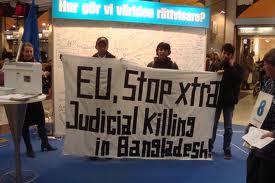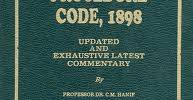Introduction:
Judiciary has been finally separated from executive at the beginning of November look and expectation of people is mounting day by day. Ensuring justice for vulnerable people, Particularly women and children. would be a priority lost for independent judiciary. Although the task is challenging, but if is morning that shows the day. In order to achieve a good result, there must be a good start.
Our legal system has immense impact on the rule of law. The fabric of a legal system is very complex and interrelated laws are the legal materials and the legal intuitions are the fabricators of a legal system upon which the building of a legal system is constructed. legal system has been spilt in attempt to give an exact definition of the term laws because of several difficulties.
Firstly, the term is embodied is philosophical perplexities.
Secondly, the traditional method of definition is totally adequate for our purpose.
Thirdly, the term possesses a high emotive contents.
Fourthly, it deals with both just and unjust.
Fifthly, as widest sense, it modules any rule of action. Law is the main material of a legal system upon which the entire legal system resolves. The subject of legal history comprises the growth, evolution end development of the legal system of a country, The legal system of a country at a given time is not the creation of one of one day; it represents the cumulative fruit of the endeavor, experience, thoughtful planning and patient labour of a large number of people through generations. To comprehend understand and appreciate the present legal system adequately, it necessary, there tone to acquire a background knowledge of course of its growth and development.
The truth is that the traditions of the past have made our modern legal system what it is and still live on it. Without proper historical back ground, it may be difficult to appreciate as to why a particular feature of the system is as it is. The historical perspective throws light on the anomalies that exist here and there of the systems.
The judicial system on the whole, is tolerable adequate. A hierarchical network of court spreads in the country to dispense justice. Law is mostly codified, and uniform throughout the courting in basic branches of human relationship. How ever, to say all this is not to say that the legal systemic perfect.
Objective of the Study:
Object of the study legal systems or a country is to maintenance of administration of a justice within the political community so that the night shall be exercised by the might of the state.
The legal system has structure. It constantly changes, but different parts change at different speeds. The structure is the skel for of the system. As for example the constitution of Bangladesh is along with the status give shape to the there a gans of government as a skelton or structure, namely the esentive legistature and the judiciary. Turough this structure the state function.
Scope and limitations of the study:
Scope and limitation is a very important things of a study. We discuss this research monograph civil and criminal courts and there structure and jurisdiction, various kinds of tribunals its structure and jurisdiction. Not outside this. Because research monograph has a some scope and limitation. Outside of the topic we don’t discuss it.
Chapter -II
Historical Back ground of the Judicial system in Bangladesh:
In India the Mughal Period begins with the victory of Babar in 1526 Humayun, lost his lcingdom to sher shah in 1540, regained it from sher shah in July 1555. The Mnghal empire Continued form 1555 the 1750.[1]
During the Mughal period, the civil administration was devided into the Imperial Capital, Provinces (subahs) parganahs & villages. The Mughal emperor was the supreme authority. During the mughal period, the emperor was Considered the fountain of Justice.[2]
Mughal Period
a) Courts at capital.
At Delhi, three important Courts were established.
1. The Emperors Court preside over by the Emperor, was the highest Court of the Empire. Its had Jurisdiction to hear original civil & Criminal Cases.2
2. The Court of Chief Justice :-
The Court of Chief Justice presided over by the chief Justice, was the second important court at capital. It has Jurisdiction to try original, civil, & criminal cases & also to hear appeals from the provincial courts.
3. Chief Revenue Court :-
This was the 3rd important court in Delhi, was the highest court of Appeal to decide revenue cases. The court was presided over by the Diwane-e-Ala.
Besides the three important courts, there were also two lower courts as
i). The court of Quazi of Delhi,
ii) The Curt of Quazi-e-Askar.3
b. Provinces :-
In each province (subah) there were three courts flowingly :-
1. (Adalat-e Nazim-e-subah) :-
Its had original Jurisdiction in all cases arising in the provincial capital, it was presided over by the goveror.
ii) The provincial chief Appellate Court :-
It was presided over by the Quazi-e- subah. The Court had original & Civil & Criminal Jurisdiction.
iii) Provincial chief Revenue court :-
It was presided over by Diwan-e-Subah. It had original & civil Jurisdiction in all revenue matters. 4
C) District Courts :-
District Courts were divided into four classess.
1. District Qazi :-
This Court had Jurisdiction to try all civil & Cuiminal matters.
2. Faujdar Adalat ;-
Faujdar adalat had Jurisdiction to try, Cases Concerning riots & state security.
3. Kotwali Court ;-
4. Amalguzari kachari ;-
d. Parganah :-
Each parganah were devided into 3 courts: namely
1. Adalate-e- Parganals was presided over by Quzi-e-Parganah. The court had Jurisdiction to try all civil & criminal cases arising with its original Jurisdiction.
2. Court of kotwali was presided by kotwal -e- Parganah to decide such cases as are found in the modern police Act.
3. Amin was the presiding officer in kachahri which decided revenue cases.
e) village Courts :-
In each village there were two courts.
1. Village Panchayat
This Court had power to decide all petty local civil & criminal matters.
2. The Court of Zaminder :-
In the late Mughale period Zamin dar’s Courts were empowered to try petty Criminal & civil matters. [3]
British or Colonial Period :-
The development of the administration of Justice in British india may be divided into followings five periods :
1. First period :
Early Administration of Justice until the charter of 1726- This period marks the beginning of the British administration of Justice in India. The East India Company gradually took possession of three factories & settlements at Bombay, Madras & Culcutta. The first Mayon’s Court in india was established at Madras by company charter of 1687.
The Company acquired territorial acquition of Bangla, Bihar & orissa in 1765. Thought the company took the full control of Diwani & military Power , the administration of both civil & criminal justice were left to the indigenous machinery at the hand of natives untill 1772.
Second period :
The Era of the Mayor’s :- The charter of 1726 established a corporation of justice for each presidency towns : following changes in the administration of justice were made by this charter
1. Civil Judiciary
A Mayor’s Court was established in each presidency town. This court consisted of the Mayor & nine aldermen. The Mayor’s court had jurisdiction to try hear & determine all civil suits arising within the presidency town & its subordinate factories.
2. Criminal Judiciary :-
Justice of the peace :-
In each presidency town the criminal justice was vested in the Governor & five Senior members of the Council of the Company. A Justice of the peace could arrest persons accused of committing crimes, punish those who were guilty of minor crimes.
Third period :- ( 1773 – 1881) the Era of the supreme Court :-
Supreme Courts were established in Madras in 1801 & Bombay in 1824 abolishing the mayor court
The supreme court consisted of a chief Justice & three other puisne Judges. The general Jurisdiction of this court was limited within the presidency town. Beyon the presidency town the court exercised personal Jurisdiction. The supreme Court had both original, appellate, civil criminal, ecclesiastical & admiralty jurisdiction.
Fourth period : Era of unification :-
Two paralle Judicial system namely, the company’s court in Mufassil areas & three High Courts of Judicature at three presidency towns. The ordinary jurisdiction of the High Court was limited to the local ilmits of the presidency Towns. The High court was empowered to try all suits except such suits within the jurisdiction.
Constitution & Jurisdiction of the Federal Court :-
The federal court was composed of three judges. one chief justice & two puisne judges. The Federal court was given exclusive Jurisdiction to decide cases.[4]
Judicial system of pakistan ;-
The Judicial system of pakistan was mainly cons’st of supreme court, High courts & two sets of sub-ordinate courts , namely civil courts & criminal courts.
Supreme Court of Pakistan :-
The supreme court of pakistan consist or a chief justice & not more then six other judges. This court had original, appellate & advisory jurisdiction.
The High Court :-
The High Court had consisted of a chief justice & such number of other judges. This court had jurisdiction to heae appeals from sub-judges & District Judges in both civil & criminal cases.
Courts within District :-
The District Judge hears appeals from the courts of sub Judges & Munsiffs. It has original Jurisdiction
The District judge also tries criminal cases, it was called the session judges.
Bangladesh period :-
Tegal system is very important for all independent countries. As a independent country Bangladesh has own history of its legal system.
Separation :-
Article 22 of the constitution of independent Bangladesh says,
The state shall ensure the separation of the judiciary from the executive organs of the state 13. But the provision was neglected. However , the non-party Caretaker govt. Started initiatives in Jannary 2007 & it was successful on nov 1. 2007. Judicial system of Bangladesh Consists of a supreme court subordinate courts & tribunals. The supreme court of Bangladesh is consisted with the Appellate Division & the High Court Division.
The Appellate Division has Jurisdiction to hear & deter mine appeals, of the High Court Division . The High Court Division has both appellate & original Jurisdiction. It has Jurisdiction to hear appeals from Subordinate Counts & tribunals. The High Court Division has also power to hear writ application.
The supreme court of Bangladesh:
The supreme court of Bangladesh was established in accordance with the provision of the Article 94 of the constitution of Bangladesh which provide that there shall be a supreme court of Bangladesh comprising the appellate division and the high court division. It is the highest court of Bangladesh supervise courts of Bangladesh is the last resort of the aggrieved person.
Supreme court are divided in to appellate division and high court division:
1. The High court division:
Article 101 of the constituent provides that the HCD shall have original and appellate jurisdictioiin and such other jurisdiction as may be authorized by law. The jurisdiction of the high court division may be divided in to two:
- Ordinary or general jurisdiction
- Constitutional jurisdiction
2. The appellate Division:
The appellate division of supreme court had no original jurisdiction but it had appellate. Jurisdiction only the jursidtaciton the appellate court classify below:
- Ordinary or General Jurisdiction.
- Constitutional jurisdiction.
Chapter-III
Different kinds of civil courts including social court and tribunal exercising civil jurisdiction in Bangladesh.:
Section 3 of the Civil Courts Act 1887 as amended by the Civil Courts (Amendment) Act 2001provides for following five classes Namely:[5]
1. The Court of the District Judge;
2. Court of Additional District Judge;
3. The curt of the Joint District Judge;
4. The Court of the Senior Assistant Judge; and
5. The Court of the Assistant Judge.
Every court mentioned above is a separate court and has jurisdiction
assigned to it by the Civil Courts Act or any other law which may be
either original jurisdiction, appellate jurisdiction or transferred jurisdiction. 15 of the Civil Procedure Code stales.-that every suit must of he lows grade competent to section 18 of the civil courts Act 1887 reads that subject to the provisions of section 15 of the CPC the lurid Action fat District Judge or Joint District Judge Attends to all original suits. Thus apart from pecuniary Jurisdiction mentioned in, section 19 of the Civil Courts Act 1887 for Assistant. Judge. And Senior Assistant Judge the told court for filing civil suit with value exceeding taka 4″ lac is the Joint District: Judge’s court. Tuff pecuniary jurisdiction of the Joint
District Judge. Is therefore unlimited. It is thus also clear that the District Judge or the Additional District judge usually do not try original suits. However, under different special laws they have original jurisdiction.
Appeals- wherefrom and to which Court
An appeal from a decree or order of a District Judge or Add it ional District Judge shall life to thug High Court Division. However, an appeal shallot He to the High Court Division from a decree or order of an Additional District Judge in any case Turf which if the decree or order had been made by the District Judge, an appeal would not lie to that court.[6]
(1) An appeal from a decree or order of a Joint District Judge shall lie-
(a) To the District Judge where the value of the original suit does not exceed taka 5 lac; and
(b) to the High Court Division in any other cases.
(2) An appeal from a decree or order of a Senior Assistant Judge or Assistant Judge shall lie to the District Judge.
(3) Where the appeals lie to the District Judge and the District Judge has assigned the function of receiving appeals to the
Additional District Judge, the appeals may be directly preferred to the Additional district Judge (section 21).
4)There is not provision of second appeal in the CPC. The provisions of second appeal as appeared in sections too, TC1~ and 103 have been omitted by thee Law Reforms Ordinance, 1978.
Administrative/ Transferred Jurisdiction
(1) Under its administrative control a District Judge may transfer to any Joint District Judge any appeals pending before him from the decrees or orders of Senior Assistant Judge or Assistant Judge.
(2) Additional District Judges discharge functions of a District Judge that the District Judge may assign to them and in that case the Additional District Judges shall exercise the same powers’ as the District Judge (section 8).
The Court of District Judge
This court which is next in the hierarchy down from the High court Davidic headed by a District Judge.
1) A District Judge usually does not try original suits. This is because to every suit must be instituted in the court of the lowest grade compel Notary it. “However, under various special laws the District Judge Try certain cases, like moil fug fan hug probe and administrator etc.[7] Under “the Special Powers, Act 1974 ‘.scion Judgei jess ion Judge and Assistant Session Judge act as special tribunals for the trial of offences trouble the Act.
2) The District Judge’s pecuniary jurisdiction is unlimited. Under sections 8, 1.1A22, 23 etc of the Civil Courts Act “1887 he has power to delegate his Court under his adman strait decontrol.
3) Subject to the superintendence of the High Court Demising. Have administrative control overate the Civil Courts under the Civil Cams Act 1887 within the local limit sot hisjunsiction (section9).
4) This Gower to Jury transfers any suit, appeal or other proceedings in aoyciyilj: ports below-the High Court Division (sectionJ24 Civil Procedure Code).
5) The appellate jurisdiction of this court has already been discussed above.
(6)This court has also jurisdiction with regard to probate arid letter of administration and guardians and wards. In some districts there are Courts of Addition al District lodges who fry and dispose of cases which have been transferred by the District Judge.
7) District Judge has been given revision power by the Reform Ordinance 1978. Under this Ordinance the District Judge has powers.
Court of Additional District Judge
(1) The judicial functions of an Additional District Judge are similar to those of a District Judge.
(2) He tries those cases which are transferred to his court from the Court of the District Judge.
(3) Appeal from this court normally lies to the High Court Division. However, an appeal shall not lie to the High Court Division from a decree or order of an Additional District Judge in any case in which, if the decree or order had been made by the District Judge, an appeal would not lie to the High Court Division.[8]
(4) We will see later additional District Judges are appointed as additional Session Judges as well to adjudicate criminal maters.
Court of joint District Judge
1) This court exercises two types of jurisdictions- original and appellate.
(2) As mentioned above the Joint District Judge’s pecuniary jurisdiction in original sute is unlimited. This court has juris
3) Appeal form this court will lie to the District Judge where the value of the original suit did not exceed taka 5 lac. In case the value exceeds taka 51ac, appeal will to the High court Division.
4) The District Judge may transfer to a Joint District Judge under his administrative court any pending appeal from the Decrees or assistant Judge (section 22).
5) This court is also empowered to as small Causes Court (section 25).
6) As we will see later, all joint district Judges are also as Appointed as Assistant” Session Judges to adjudicate
Senior Assistant Judges’Court
This court has original jurisdiction a claim the value does not exceed taka 4 lac. Appeal from this court lies to the Court of the District Judge. The District Judge may withdraw any proceedings on 23 of the Civic Courts for Tact below and Tie either dispose of them or transfer them to the Senior Assistant Judge Court or any other Control. This court is also empowered to act as Small Causes Cohort (section 25 of the Civil ‘Courts Act) -This court states at the base .of hierarchy of civet- courts Is original jurisdictions Hornito do a plaint the • value of which does not emceed take 2 1 ac. Appeal from this court lies to the Copilot Did strict- Judge. The District judge may withdraw any proceedings under section 23 ‘of the : Gail Courts Act from a color beep w and may either dispose of them or trans farthing Up the Assistant Judge’s.. Court or another court under. Its administrative control. This court also empowered To Causes Court The s copulas al so been invested three Stoical power ingest civil matters coming from Village go Tulsan file Village Courts Ordinance
Assistant Judges’ Court
This court stands at the base of hierarchy of civil courts. Its original jurisdiction is limited to a claim the value of which does not exceed taka 2 lac. Appeal from this court lies to the Court of District Judge. The District Judge may withdraw any proceedings under section 23 of the Civil Courts Act from a court below and may either dispose of them or transfer them to the Assistant Judge’s Court or any other court under its administrative control. This court is also empowered to act as Small Causes Court. This court has also been invested with the revisional power in petty civil matters coming from Village Courts under the Village Courts Ordinance 1976 (section 4(2)).
Exclusiveness of Civil and Criminal Matters
It will clear later that only Senior Assistant Judges and Assistant Judges with Civil matters; they are not invested with any power to deal with criminal natters. On the other, hand all Magistrates deal only with criminal matters magistrates are not judicial officers. They are appointed as civil servants thought they are given extra power to try Criminal cases.[9]
Tribunal established in over legal system in two ways.
- Tribunal established according to the constituents.
- Tribunal established according to statute.
According to article 117 of the constitution delay with the formation and function of a administrative tribunal in over country.
Administrative tribunal:
Administrative tribunal deal with the dispute relating to employment between the government and its employers.
Each administrative Tribunal.
Consist of one member who is appointed by the government from amongst person who are or have been district judge.
It has exclusive jurisdiction to have and determine application made by any persons in the service of the people republic of an statutory public authority in respect of the terms and conditions of his service. [10]
Labour Court
The Government may by notification in the official gazette established labour court as it necessary.
A labour court shall be consisted a chairman and two members but in respect of any matter under chapter ten and twelve it shall be consisted by a chairman alone.
The chairman may be appointed from the amongst of the judges or additional district judge.
According to the labour court act 2006 sec 214 sub (10). A labur court shall have exclusive jurisdiction on the following matters namely:
- To adjudicate and determine industries dispute on to try any offence under this code.
- To examine and adjudicate any implementation on violations of a settlement which is refried by the government.
- To exercise any rower referred by this code.
And provision contain in chapter 35 of the CRPC shall apply to labour court.
According to the Sec 215 of the labour court 2006 this court shall follow as namely as parable summary procedure for CRPC to try any offence. It has the same power as like the fist class magistrate under the CRPC to trying any offence and for the purpose of punishment it has the same power as like court of session.
According to section 216 of the labour court act 2006 except the adjudicating and determining any criminal cases this court shall be deed a civil court. It may power as like civil court and power conferred by this court to try an civil matter except criminal matter.
Labour appellate tribunal:
According to the sec 218 of the Bangladesh labour law 2006 labour appellate tribunal shall be consisted by chairman and such number of members. And such chairman shall be appointed from among person who is one has been a judge or an a additional judge of the supreme court labour tribunal shall followed as namely as possible the provision of civil code procedure to hear appeal. This tribunal has power to modification awarded decision, judgment or section given by the labour court. It any person aggrieved on the decision of the labour appellate tribunal than the aggrieved person may appeal to the high court decision.[11]
The Artha Rin-Adalat:
The Artha Rin Adalat was established under section 104 of the Artha-Rin-Adalat Ain act 2003. Every financial institution as listed in section 2 will file suits for recovery of many against a loan defaulter under this act. This Adalat follow its own proceeding as well as the proceeding of CPC and application will be file to the court through affidavits. A join district judge will be appointed as judge of this court.
Land survey tribunal:
Land survey tribunal has been established under chapter (xvii A) section 145 (A) of the state acquisition and tenancy X act (1950) SAT act. This chapter has been added in 2004 by an amendment in the act.
The Arbitration tribunal:
According to the section 11 of the arbitration act. The parties shall be free to determine the number of arbitration. And under the provision of this act the parties are able to consist of arbitration tribunals.
According to the provision of sec 12 of the arbitration tribunal act 2001 parties may be appointed arbitrator to follow the requirement of the arbitration under this act.
According to the provision of sec 17 of the arbitration act 2001 provided that if the party is disagreed then the tribunal may exercise its own jurisdiction-
- There is existence of a valid Arbitration agreement.
- The arbitration tribunal is properly constitute
- Whether the arbitration agreement against the public policy
- The arbitration is unable to preformed
- What matter have been submitted to arbitration is accordance with the arbitration of agreement. [12]
Family court:
Formation and its jurisdiction:
Family courts have been established under the ordinance 1985. The assistant judge is the judicial officer of this court.
The court have jurisdiction over the following matters.
- Desolution of marriage
- Dower
- Restitution of conjugal rights
- Maintenance
- Guardianship and custody of children.
Small causes court:
Sec 25 of the civil courts act 1887 small course court established act for the selltement of small and pelty claims between parties.
There is no separate court for small cause but some regular judges or prissily empowered to try such case the join district judge. Senior assistant judge and assis5ant judge have jurisdiction to try cases of small causes.
According to the section 15 of the civil courts act 1887 all suits of civil nature of which values does not sec 25 thousand taka shall be cognizable by the court of small caurs3e and if is the highest pecuniary jurisdiction.
According to the sec 25 of the civil courts act 1887.
- Small causes suit valued up to taka six thousand is to be field in the court of assistant judge.
- Suit valuation up to taka 10 thousand to be filed in the senior assistant judge court of the local area.
- Suit valuation up to taka 20 thousand is to be filed is the joint district judge court of the local area vested with small causes lower.
Chapter-IV
Different kinds of criminal courts and Tribunals exercising jurisdiction in Bangladesh:
The code of criminal procedure 1898 is the legal basis of the criminal courts in Bangladesh. According to the section 6 of the code of criminal procedure beside the supreme court there shall be two kinds of criminal court in Bangladesh. They are given below.
Session Court
Magistrate Court [13]
Magistrate court are divided in to two classes.
- Judicial magistrate
- Executive
According to the sec 6 (3) of code of criminal proceeding judicial magistrate are classified in 4 class.
- In the metropolito9n area chief metropolitan magistrate. Out of metropolitan area chief judicial magistrate.
- In the metropolis area metropolitan magistrate. Out of metropolitan area fist class Magistrate.
- Second class judicial magistrate
- Third class juridical magistrate.
According to the section 7 (1) of the Court of criminal procedure there shall be more session division in Bangladesh and according to the Court of criminal procedure very session division shall have one district or more district. According to the section 7 (2) of the Court of criminal procedure government have been change to number or area in division or district.
According to the sec 9 of the Court of criminal procedure government has been established one session court for every session division and one judge shall have appointed for this court.
According to the section 31 of the Court of criminal procedure session judge and additional session judge give any sentence which is approve in law. It will be need approved of high court division when session judge or addition all session judge give death sentence. Beside this according to the session 31 of CRPC joint session judge give any sente4nces beside death sentences or up to 10 ears imprisonment.
Given a table below about jurisdiction of court of session.
Session court: [14]
In every district there is a court of session. District suges has power to worked as court of session. Basically district judge and additional district judge in same person when he operate civil cases he called district judge. When session are located in what reposition area then is called metropolitan session court. The jurisdiction of the session court may be divided in to following categories.
1. Original Jurisdiction:
This court try any criminal offence authorized by code of criminal procedure this court given death sentence subject of confirm by the High court division.
2. Appellate jurisdiction:
This court have jurisdiction to hear appeal.
3. Provisional jurisdiction:
This court have revisioinal pwoer according to the section 435 of criminal procedure code. According to sec 526 as well as 528 of the criminal procedure code.
4. This court have of power with draw a cases.
(B). Additional session court:
The court of additional session judge shall have exercise same powers of like session judge court when additional session judge situate in matropolitioin area is called additional metropolitan.
(c) Joint session court:
Joint session judge may exercise any power authorize by law except a sentence of death or a term exceeding ten years on of imprisonment when join session judge located in metropolitan area is called joint that repository join session court.
(a) 1st Class magistrate:
According to the section 32 (1) of the CRPC metropolitan magistrate or 1st class magistrate may give any sentence up to 5 years and fine up to taka ten thousand.
(b) 2nd class magistrate:
According to the section 32 of the criminal procedure code 2nd class magistrate may pass imprisonment up to 3 years including solitary confinement and give fine up to rive thousand taka.
c) 3rd Class Magistrate:
According to the section 32 of the criminal procedure code 3rd class magistrate give imprisonment up to two thousand taka.[15]
Executive magistrate: [16]
According to the sec 10 of the criminal procedure code the executive magistrate have he following function and powers.
- In every metropolitan area and district area the government shall appoint any persons to be an executive magistrate and among them shall appoint dissect magistrate.
- The government may appoint any executive magistrate to be an additional district magistrate and they have the same power s like district magistrate.
- The government or distrct magistate define local area time to time within which exceutive magistarate may excesise its power.
- According to section 4.2.6 the executive magistrate shall not exercise any judicial function. This court shall do such work as like administrative or executive nature such as granting of a license sanctioning a procreation on withy drawing from procreation etc.
Special magistrate: [17]
Sec 12 of the code of criminal procedure provide power and function of special magistrates. The government may confer up to any persons all or any of the power conferred to executive magistrate such person is called special executive magistrate the government may appoint such officer to do work for a certain period such meditative will be appointed out side metropolitan area. Such power will not confer on such person who is in below grade of the any person like judicial magistrate of the 1st, 2nd and 3rd and class magistrate.
District Magistrate: [18]
Ordinary power of the 1st class.
- To hear appeal from orders of magistrate relating to accept or rejecting.
- To hear on refer appeal from magistrate 2nd class and 3rd class.
Nari-o-shisu nirjatan Daman Tribunal [19]
Nari-o-shishu Nirjatan Domon Tribunal has been established under the provision of the Nari-o-shishu Nirjatan domon Ain 2000. According to th3e section 26 every district there must be a tribunal of such cases. If the government think necessary may consist more tribunal in each district.
The tribunal shall be consisted by one judge who is appointed for amongst the district judge.
The speedy trial tribunal: [20]
According to the section 4th the speedy trial act 2002 the government may be notification in the official gazette, may consist one more tribunal if he think fitsand may notify the local limited of each tribunal the president may appoint as session judge on retired session judge of be the judge or special tribunal.
According to the see 5 of the speedy tribunal act the government may by notification of the official gazette may confer any offence to try this tribunal.
Ain srinkhala Bigno-kari oporad druto bichar tribunal ain 2000/2002[21]
According to the section 8 of this act the government may by notification of the official gazette consist one on more speedy trial tribunal in each district and metropolitan area and mentions its jurisdiction.
The court is comprised with the first class magistrate.
According to the section of this act this tribunal shall try any offence under this ordinance.
The Environmental court:[22]
The environment court was established under section 4 of the environment court act 2000 consisting at one judge hold port as joint district judge and it will be situated in every head quarters of the division. The government may appoint special magistrate to try any offence for which the punishment is not exceeding 2 tens imprisonment and 10 thousand taka fine the offence mentioned in section 15 of this act where the highest punishment is up to 10 year imprisonment and 10 lakh fine or both.
The environmental appellate tribunal:[23]
The environmental court act 2000 provided the provision of established on environment appellate tribunal under section 12 comprising of a judge port of district judge.
The government may empowered a district and session judge to worth as a judge to the environment appellate court as an extra change and they will follow the proceeding of criminal procedure code in criminal cases and proceeding toe civil procedure code in civil case suit.
The special tribunal:[24]
The special tribunal has been established under the special power act 1974 with the session judge as special judge of the tribunal. It deal with the offence as special in the schedule of the act for offence punishable under the special power act 1974. The arms act 1818 the explosive substances act 1908. Rule made under the emergency power act 1975. Section 376 of the penal code 1860 etc.
Conclusion
At last we says that our judicial system has some problem. After the above discussion can say that court judicial system has few problem. It we are able to cure that problem then our judicial system will be able to compute its function speedily & appropriately some days ago our judiciary system has been separated from the executive disjoin. It is important and revolutionary change is our judicial system. There also have few problems also. Exam justice and judge has refaced difternt5 problem in tuner work. Some times if very difficulty for them to do work independently they are were threatened by some powerful person. Juristic adjudge though they have done important work they don’t yet sufficient salary allowances medical service transport & residential facility other essential facility. If they will get highest facility & independence then they willable to do work contently.
Bibliography
Govt. Publication
- Civil Procedure Code -1908
- Criminal Procedure Code-1898
- Nari-o-shishu Nirjatan Domon Ain 2000
- Special Power Act 1974.
- The Arbitration Act 2001
Book:
- Ali Dr. Anser; Legal System of Bangladesh.
- Halim Abdul M. Rahman Masum Sifur; The Bangladesh Labour Code 2006
- Halim Abdul & Siddiki, N.E Legal System of Bangladesh.
- Halim Abdul, Legal System of Bangladesh, University of Publication.
- Jain MP, Outlines of Indial Legal History, 5th ed. (Indina\: Wadhwa and Company 1993)
- Kulshreshta’s India Legal and Constiutioinal Histroy, Sixth ed.
- Islam Shifqul; The Arbitration Act, 2001
- Martin, Jacquelline, The English Legal System 3rnd ed. (Hder & Stoughton, 2002.)
Website:
- www.bdlaw.gov.bd.
- www.histroyofindia.com
- www.laweduction.com
[1] Kulshreshthas V.D. Land Marks in Indian Legal & Constitutional history p-21
[2] Ibid. p-21
[3] Halim A. & Shiddiki N.E. The legal System of Bangladesh p.p 52-59.
[4] Ibid p
[5] a. Civil courts Act 1878. b. Civil Courts (Amendment) Act 2001.
[6] Sec-10, Civil Courts act 1878
[7] Sec 15, civil procedure code 1908
[8] Sec 10 Civil Procedure Code 1908.
[9] Miah, Siddiquer Rahman, Commentary on Civil Rules and Order, page. 211
[10] Administrative Law, Takwani, C.K.
[11] Labour & Industrial Law, Dhor, Nirmaladu
[12] The Arbitration Act, 2001, Islam, Shafiqul.
[13] Azad Shekh Mohammad. A New best Advocate ship Guidy Kamrul Book house. Dhaka Oct. 08 page 249.
[14] Halim Abdul and Siddiki N.E. Legal System of Bangladesh after separaton university publication, Dhaka, July 08 page134
[15] Halim Abdul and Siddiki N.E. Legal System of Bangladesh after separaton university publication, Dhaka, July 08 page134
[16] Azad Md. Abul Kalam. Criminal procedure code Lipi Law book house. Dhaka 1st June, 2008 p.23
[17] Azad Md. Abul Kalam. Criminal procedure code Lipi Law book house. Dhaka 1st June, 2008 p.26
[18] Azad Md. Abul Kalam. Criminal procedure code Lipi Law book house. Dhaka 1st June, 2008 p.27
[19] Moniruzzaman A.K.M. Nari-o-shishu Nirjatan Domon Ain 2000; shamash publication, Dhaka. Dec. 07; p 124-125
[20] [20] Moniruzzaman A.K.M. Nari-o-shishu Nirjatan Domon Ain 2000; shamash publication, Dhaka. Dec. 07; p 236
[21] [21] Moniruzzaman A.K.M. Nari-o-shishu Nirjatan Domon Ain 2000; shamash publication, Dhaka. Dec. 07; p 295.
[22] Halim Abdul and Siddiki N.E. Legal System of Bangladesh after separaton university publication, Dhaka, July 08 page 163
[23] Halim Abdul and Siddiki N.E. Legal System of Bangladesh after separaton university publication, Dhaka, July 08 page164
















